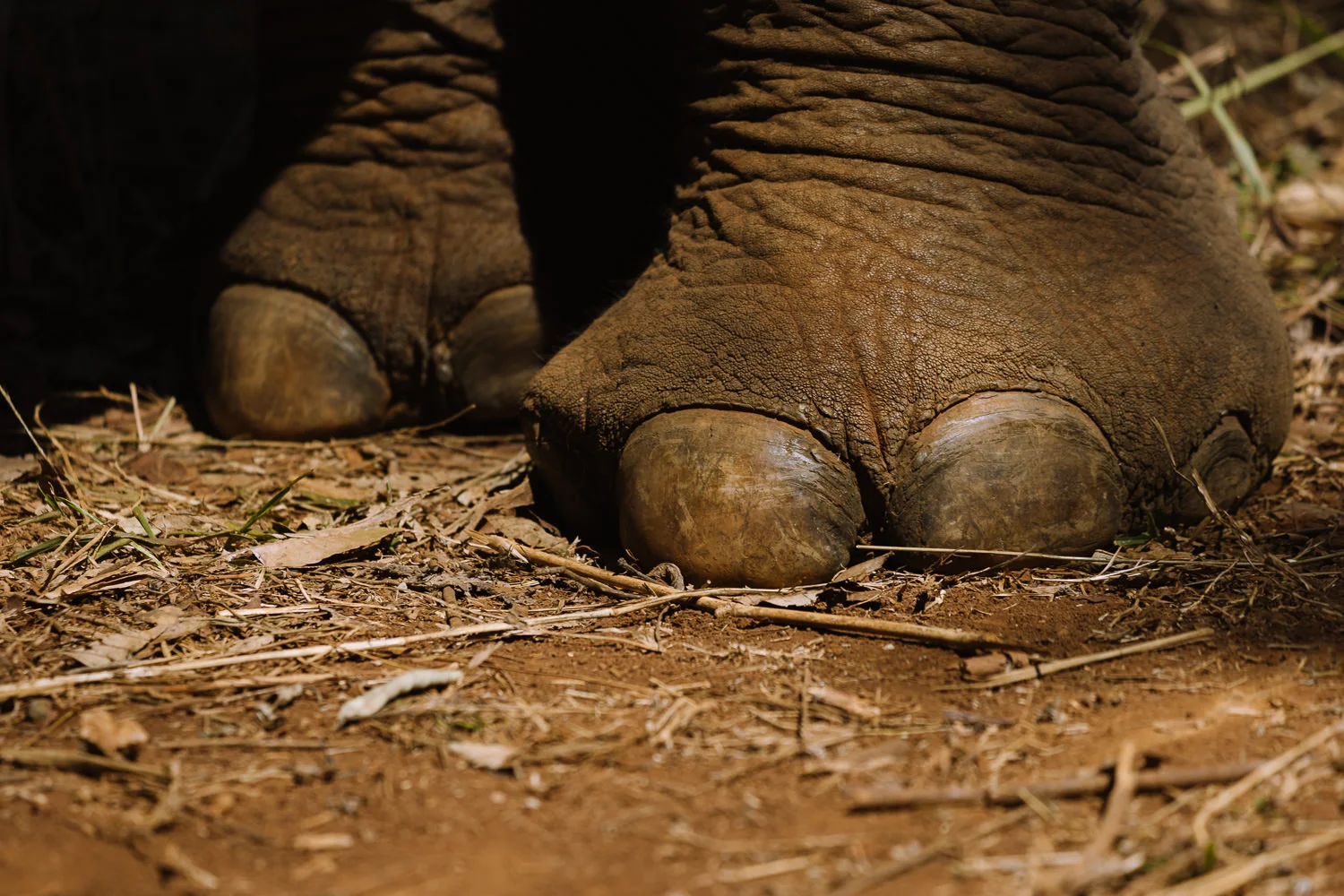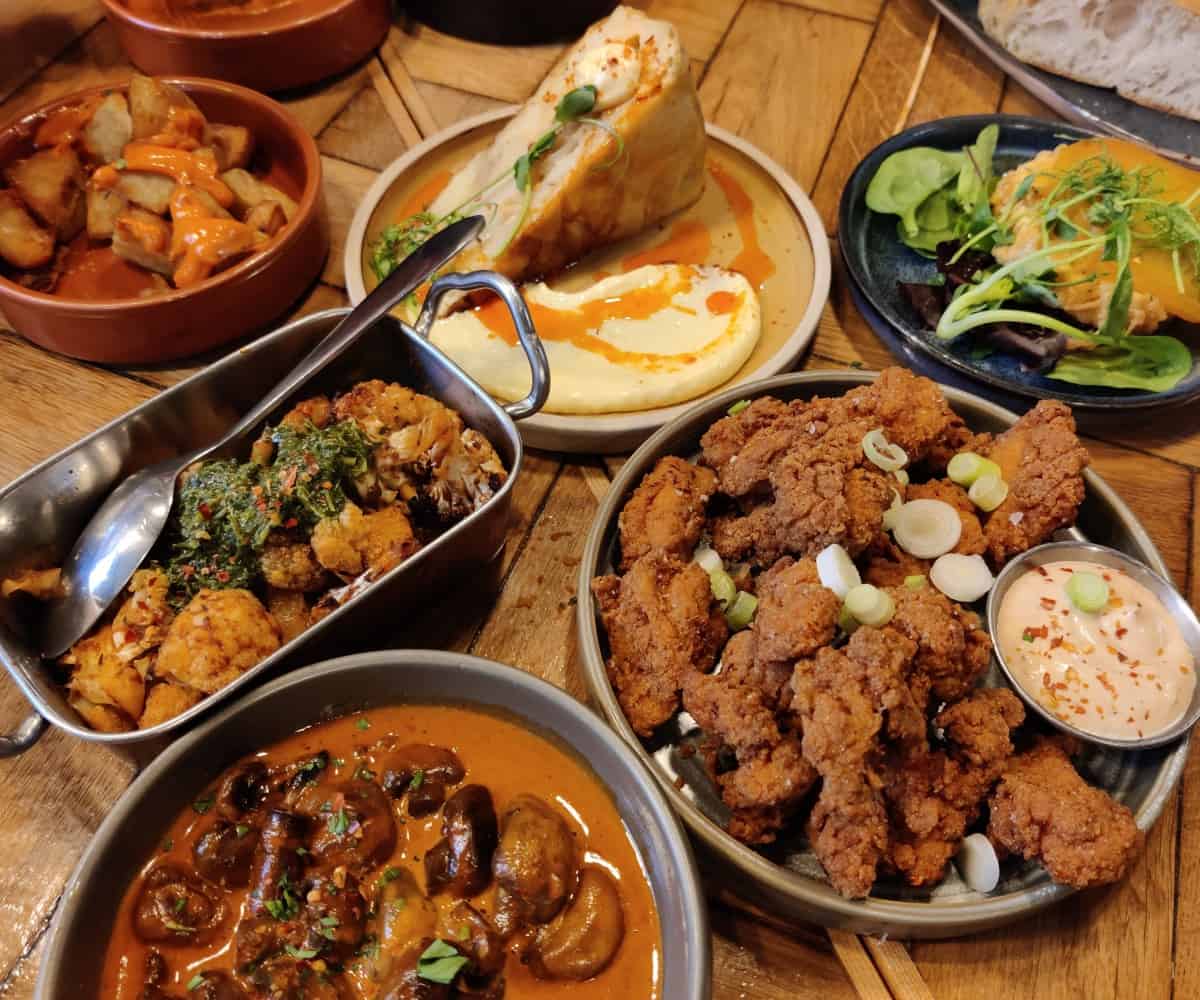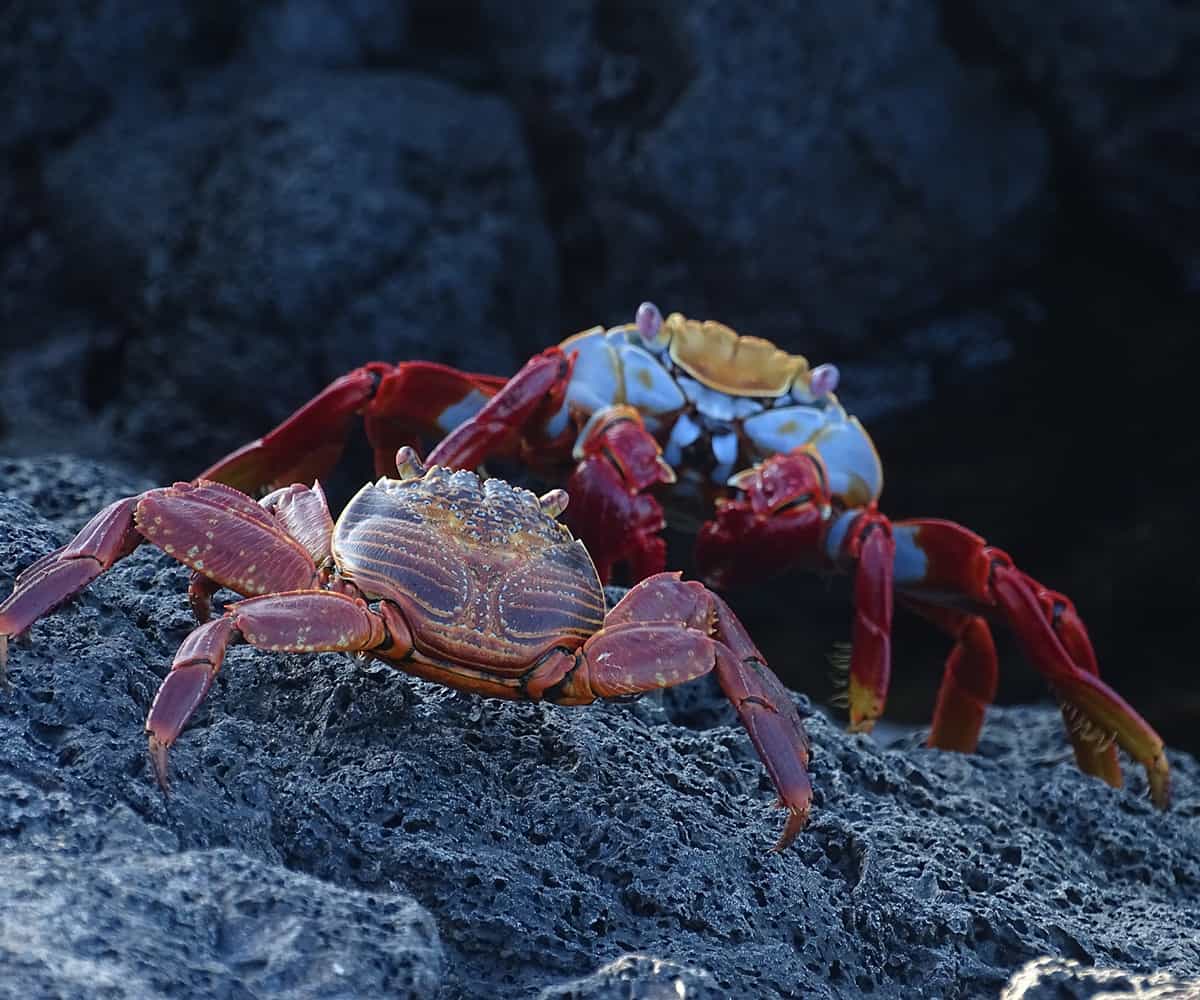Have a close encounter with wildlife and experience indigenous cultures in this remote corner of Cambodia that is managing to hold on to a few remaining pockets of forest. Here’s our guide to visiting Mondulkiri, Cambodia.
By: Paul Healy |
Published: 25 Mar 2024
With the advancement of logging in Cambodia, Mondulkiri, although not untouched, is defiantly holding on to a few remaining pockets of forest.
Separated by patches of barren, often burnt lands, these elusive patches of greenery are a sanctuary for some of the best wildlife in Cambodia.
Home to a quarter of the country’s wild elephants, as well as primates and hundreds of bird species, Mondulkiri has a focus on balancing the needs of the wildlife and indigenous communities. Several tourist experiences in Mondulkiri directly support these causes.
This sparsely populated province was once difficult to get to, but new roads have opened up, offering some wonderful experiences in Cambodia that are much easier to get to.

WHERE IS MONDULKIRI?
Mondulkiri is a province in the remote northeast of Cambodia. Bordering Vietnam, the region is covered in forested hills and cut by three rivers.
The area is sparsely populated and used to be difficult to reach. But new, paved roads have been built, making bus journeys from Phnom Penh, Siem Reap, and Ratanakiri much more accessible.
The capital of Mondulkiri is the town of Sen Monorom. Almost all tours and excursions leave from here, making it the best base to explore the area.
MONDULKIRI PROVINCE MAP
We have included all the best things to do in Mondulkiri on the map below along with the different bus stops and all our recommended places to stay.
How to use this map / Click on the top left of the map to display the list of locations, then click on the locations to display further information. Click on the top right corner of the map to open a larger version in a new tab or the star to save to your Google Maps.


WHY GO TO MONDULKIRI?
There are three great reasons to visit Mondulkiri.
Wildlife – Although Cambodia is cutting down its forests at an alarming rate, the province of Mondulkiri contains several large wildlife sanctuaries. Here you can swim with elephants and witness endangered gibbons swing through the trees while trekking through the jungle.
Waterfalls – The three rivers that meander through Mondulkiri tumble over magnificent waterfalls. Some are particularly dramatic, providing majestic locations to swim.
Indigenous People – Mondulkiri is mostly populated by an indigenous group called the Bunong. Meeting the people and understanding their way of life is a fascinating insight into Cambodia’s diverse culture.


THINGS TO DO IN MONDULKIRI
1. ELEPHANT EXPERIENCE
It was only a few years ago that Cambodia’s elephant sanctuaries had a bad reputation for mistreating elephants. But things have changed.
Tourists have demanded better welfare for the animals and the sanctuaries have responded. Today reputable sanctuaries are a genuine refuge for previously mistreated elephants, while also providing an unforgettable experience for visitors.
There are two good but different elephant experiences in Mondulkiri Province.

1.1 MONDULKIRI PROJECT
Managed by the Cambodia Rescue Organisation, the Mondulkiri Project has 4 elephants they have saved from logging or riding. These previously captive elephants are habituated to humans, and the Mondulkiri Project is a very hands-on experience.
In the morning you hand-feed the elephants bananas, and in the afternoon you can swim with them in the river. The elephants are free to roam within the forest, but with constant food on offer they don’t head far, so there’s very little hiking to see them.
Funds from tourist visits are used to help the indigenous Bunong community, protect the forest from logging, and purchase other abused elephants.
Bookings – The 1-day elephant adventure costs $50 and includes pickup and drop-off from most centrally located guesthouses.




1.2 ELEPHANT VALLEY PROJECT
This elephant experience is less hands-on and more expensive, but it’s in a more natural environment. There is no hand-feeding or swimming with the elephants. Instead, their 10 retired and rehabilitated elephants roam over 1,500 hectares of forest.
Tours involve hiking out to see the elephants and watch them as they graze, play and wander through the forest. The length of hike depends on where the elephants are, but sightings are guaranteed.
Elephant Valley Project Prices –
- Half-day trips – $47.50 (requires about 3-4 kilometres of hiking).
- Full day trips – $100 (includes lunch and requires about 5-8 kilometres of hiking.
- Do Gooder Experience – $65 (includes a half day elephant experience and half-day volunteering.)
The Elephant Valley Project is run by a Cambodian NGO and over 50% of funds raised go to causes outside of elephant care. They have helped to protect 300,000 hectares of forest and support over 2,000 indigenous residents.
Bookings – Elephant Valley Project




2. JUNGLE TREK
Mondulkiri is surrounded by wildlife sanctuaries which try to balance the needs of the indigenous people with those of the wildlife. It’s a constant battle between protecting animal habitats against illegal logging which sells wood in Vietnam, but also helps expand farmland.
Although Cambodia has cut down a lot of forest, there are still some excellent pockets of nature. One of the largest is the Keo Seima Wildlife Sanctuary and a great thing to do in Mondulkiri is to join a guided trek.
The sanctuary is home to the highest number of species in any protected area in Cambodia. Within its boundaries are 350 bird species, a quarter of the country’s wild elephants, and primates including monkeys, lesser apes and lorises.
In general, these animals are hard to see, and a trek is mostly about experiencing the forest and learning about the Bunong people. Most tours include hiking through the forest, visiting a Bunong village, eating a traditional Bunong lunch and swimming in a waterfall.
Mondulkiri Project offers a popular 1.5- or 2-day tour. After spending the first day with the elephants, you sleep in hammocks overnight, and then complete a half or full-day hike.




3. JAHOO GIBBON EXPERIENCE
The Keo Seima Wildlife Sanctuary is home to 25% of the world’s yellow-cheeked crested gibbons. These magnificent-looking lesser apes, live high up in the trees, swinging from branch to branch to find food.
Jahoo is a community ecotourism enterprise owned by the local Bunong community. They combine research on the gibbons with sustainable development using a mix of money from wildlife experiences and donations.
For tourists they provide an opportunity to see these remarkable and endangered animals.
Tours begin before dawn and involve a short walk into the forest. After a short wait, the gibbons begin to sing. It’s a remarkable sound that reverberates throughout the canopy.
The guides then track down the gibbons and you spend two hours following them through the forest. One of the family of gibbons has become habituated to humans, and from December to March seeing them is almost guaranteed (98%).
However, they are still high up in the trees, so finding that good viewpoint can be tricky. Binoculars are supplied.
The Bunong guides cook a traditional lunch in a piece of bamboo over a fire, which is a highlight of the experience.
In the afternoon you trek deeper into the forest where you might spot the critically endangered, black-shanked douc langur. We got lucky and saw four of them as well as another family of gibbons.

IS IT WORTH IT?
It’s a unique wildlife experience, which is pretty expensive if you’re on your own, but becomes progressively cheaper as your group gets bigger.
In 2024 the prices for the day trek were as follows:
- $350 for 1 person.
- $350 for 2 people.
- $360 for 3 people.
- $460 for 4,5 or 6 people.
So, if you have a group of 3 or more, the price becomes much more reasonable. A substantial part of the ticket price goes towards gibbon research and the Bunong community.
Book – Jahoo Gibbon Experience
Overnight Stays – It’s also possible to spend the night in one of their three huts and go on a night walk into the forest looking for all sorts of creepy crawlies.



4. TUK-TUK TOUR TO BOU SRA WATERFALL
Bour Sra is the most impressive waterfall in Mondulkiri Province. Dropping in two stages, the top cascade is about 10 metres high and 15 metres wide, the bottom cascade is 20 metres high and 20 metres wide.
There are pools to swim in and a café and restaurant on site. The waterfall can get busy with locals, especially at the weekend.
A tuk-tuk tour from Sen Monorom is a popular way to see Bou Sra. Tours stop at a pepper and coffee plantations on the way to Bou Sra with an optional stop to try locally grown tea overlooking the hills.
The final stop is the Sea Forest, a viewpoint with bars overlooking the surrounding landscape.
Cost – The tuk-tuk costs about $35. Ask your guesthouse to organise an English-speaking driver willing to explain the sights. It’s an extra $2.50 US for entrance to the waterfall and 50 cents for the Sea Forest.
How long – It’s around a 1-hour drive from Sen Monorom to Bou Sra and about 1 hour, 20 minutes to get back with stops. Tours last 4-7 hours depending on how much you do and how long you stop for. The tuk-tuk driver will generally keep things flexible for you.



5. SWIM AT LENG KHIN WATERFALL
If you fancy avoiding the crowds of Bou Sra, then head to Leng Khin. This 22-28-metre-high waterfall (depending on the season) drops into a cavernous gully creating a pool that is excellent for a dip.
The waterfall is a 45-minute drive from Sen Monorom and then a 1-kilometre uphill hike. On the hike you’ll pass another smaller cascade called Leng Orng. Its only 1 metre high but has a pretty pool for swimming and wooden tables for a picnic.
6. EXPLORE THE INDIGENOUS PEOPLES MARKET
Tucked off the main road in Sen Monorom is the Indigenous People’s Markets. This local market, stretched along either side of the street, is a vibrant hub where indigenous communities gather to sell and trade goods.
There are traditional crafts, textiles, and a wide variety of fresh produce. It’s best to visit in the early morning. Bring your camera as it’s one of the most photogenic locations in Mondulkiri.



7. TRY BUNONG FOOD
The majority of Mondulkiri residents belong to an indigenous group and the largest is the Bunong. Learning about their culture is a highlight of visiting the province.
Many of the tours are owned and run by Bunong people and include visits to Bunong villages. But another good thing to do is try their food.
One traditional dish is Samlor Prong, a thick soup cooked in a piece of bamboo. The soup broth is poured into a long section of bamboo which rests over the fire. Once the broth starts cooking, the other ingredients, usually pork, eggplant, chillies and garlic are added.
Once it’s all cooked, the soup is bashed in the bamboo with another piece of wood and a hearty soup is poured out.
It’s delicious and is served on many day tours and jungle treks.
Another option is to head to Manel’s Guesthouse for dinner. The family has a reputation for quality traditional Bunong and often host school groups where kids from Phnom Penh can learn their culture.


8. PHEA’S TREATS
Just off the main road in Sen Monorom, Phea’s Treats is a small café with a great brunch menu comprising a mix of western and Khmer dishes.
The excellent coffee is made from locally grown Mondulkiri beans, and the daily made cake is a wonderful treat. It’s a nice alternative to Khmer food.


9. LAZE BY THE POOL AT PIDOMA
Pidoma is a luxury resort on the outskirts of town. Perched in the hills it has pretty views over Sen Monorom and the surrounding forest. Visitors can use Pidoma’s swimming pool as long as they eat at the restaurant.
Come for lunch and chill out for the afternoon. It’s a great way to relax after trekking in the jungle.
PLAN YOUR TRIP
HOW TO GET TO MONDULKIRI?
With no nearby airport and painfully slow roads, Mondulkiri was once a difficult place to reach. But in the last decade, new highways and a regular bus timetable have put it on the tourist map.
It still takes most of the day to reach, but it’s a comfortable journey on an air-conditioned bus or minivan. Most visitors come from Phnom Penh, Siem Reap, or Ratanakiri.
- Phnom Penh to Mondulkiri – 6 hours 15 minutes (multiple buses a day, plus 1 night bus).
- Siem Reap to Mondulkiri – 11 hours (2 minivans per day).
- Ratanakiri to Mondulkiri – 3 hours (1 bus daily).
There are three good bus companies to choose from: Vireak Buntham, Kim Seng Express, and Rithya Express.
We used Vireak Buntham for almost all our bus journeys in Cambodia and they were excellent. Every journey was on time and the larger buses included a coffee and lunch service.



HOW MANY DAYS IN MONDULKIRI?
We recommend spending 2 to 4 full days in Mondulkiri. Here is a suggested itinerary.
- Day 1 – Join one of the elephant experiences.
- Day 2 – Head to one of the waterfalls, either on a jungle trek or a tuk-tuk tour.
- Day 3 – Get up before dawn to see and hear the gibbons at Jahoo.
- Day 4 – Explore the indigenous people’s market, get coffee at Phea’s Treats, and chill out by the pool at Pidoma.
WHERE TO STAY IN MONDULKIRI
The best place to stay in Mondulkiri Province is the town of Sen Monorom. There are plenty of accommodation options from budget backpacker lodges to luxurious hotels.
At both ends of the market, prices are generally very affordable. Guesthouses can be as little as $10, with luxury accommodation available for just $70.
Here are a few recommendations from us.
OUR PICK
GUESTHOUSE | $
MANEL’S GUESTHOUSE
Excellent value guest house with air-conditioned rooms run by a friendly family who will help arrange activities. They specialise in Khmer and Bunong cooking. It’s a 20-minute walk or $2 tuk-tuk ride into town.
BUNGALOWS | $$
MONDULKIRI PIZZA BUNGALOWS
Air-conditioned family-run bungalows overlooking a pool with fire pit and swing seat. There are common areas for chilling out and occasional movie nights. It’s a couple of minutes’ walk from the centre of town.
LUXURY | $$$
PIDOMA RESORT
Luxury 5-star resort in the hills on the outskirts of town. The outdoor swimming pool, restaurant, and terrace have lovely views over the countryside. There’s a choice of deluxe rooms or villas with a private pool.









